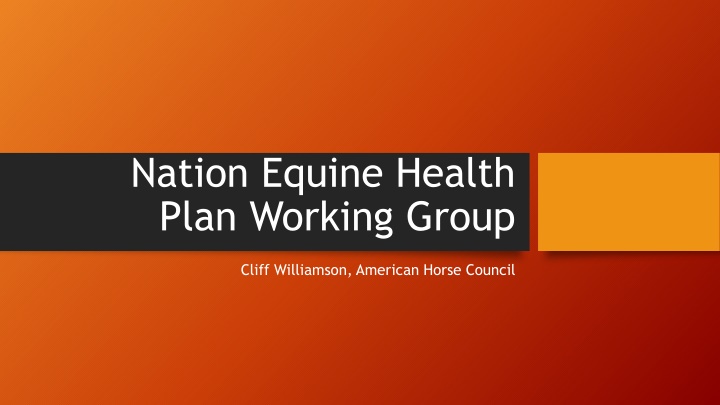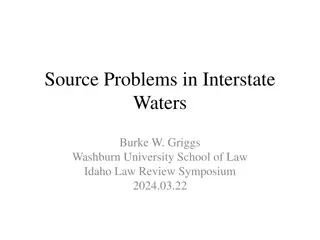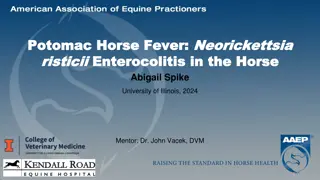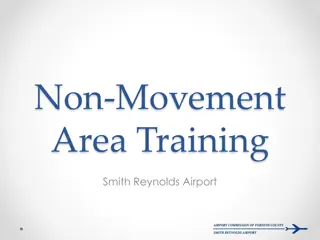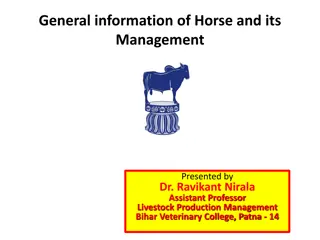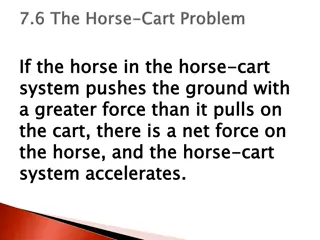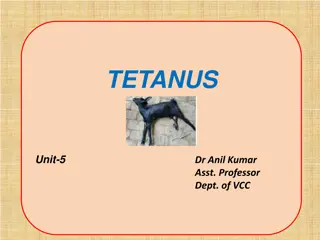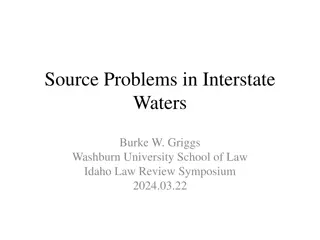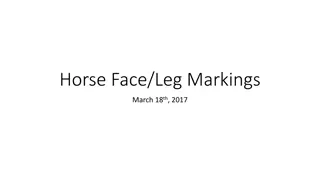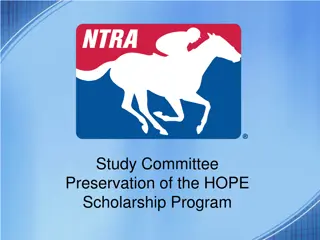Guidelines for Interstate Horse Movement
Presenting guidelines for compliance with state and federal regulations, particularly for moving horses across states in the USA. Topics include testing, vaccination requirements, official identification, certificates of veterinary inspection, and agricultural inspection stations.
Download Presentation

Please find below an Image/Link to download the presentation.
The content on the website is provided AS IS for your information and personal use only. It may not be sold, licensed, or shared on other websites without obtaining consent from the author.If you encounter any issues during the download, it is possible that the publisher has removed the file from their server.
You are allowed to download the files provided on this website for personal or commercial use, subject to the condition that they are used lawfully. All files are the property of their respective owners.
The content on the website is provided AS IS for your information and personal use only. It may not be sold, licensed, or shared on other websites without obtaining consent from the author.
E N D
Presentation Transcript
Nation Equine Health Plan Working Group Cliff Williamson, American Horse Council
Thank you for participating Dee Ellis Joe Fisch Rachel Lacey Duane Chappell Peter Timoney Courtney McCracken Linda Mittel Abby Sage Chelsea Crawford Karl H. Hoopes
Development of Chapter; Interstate Movement of Horses Objective: To present guidelines and reference materials that facilitate public compliance with state and federal regulations, specifically regulations that pertain to the interstate movement of horses within the United States.
Interstate Movement of Horses Testing and Vaccination Requirements: These state requirements are subject to periodic changes; therefore it is critical that veterinarians, transporters and horse owners review state requirements prior to departure. Identification: Under USDA federal regulations, horses traveling outside their state of origin must be officially identified prior to transport. A variety of identification methods exist, as do several additional requirements for animals moved interstate for slaughter.
Interstate Movement of Horses Certificate of Veterinary Inspection: When transporting horses across state borders, a certificate of veterinary inspection (CVI) is generally required by the authorities at the destination. Authorities may ask to see the documents. Without proper documentation, the destination authorities will determine what actions will be taken (refusing entry, imposing fines, requiring or extending quarantine, etc.). Agricultural Inspection Stations: Agricultural inspection stations are established to prevent plant and animal pests and diseases from entering the state, protecting the state s agriculture industry. The stations are open 24 hours a day, 365 days a year. States may periodically set up temporary road stop locations to check for compliance with their entry requirements. It is unlawful for the driver of any vehicle, other than those exempted by the state s statute, to pass any official agricultural inspection station without first stopping and submitting the vehicle for inspection. Not all states operate inspection stations.
Review of National Equine Health Plan Establish a list of benefits, or downsides due to the lack of, the NEHP existing Create a Glossary of Terms Include a specific statement naming the target demographic for the NEHP.
